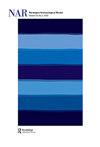瑟斯达拉骑手与五世纪欧洲的马术精英
IF 1.1
3区 历史学
0 ARCHAEOLOGY
引用次数: 1
摘要
Sösdala不再只是一种风格-在五世纪早期的三次出版之后,壮观的沉积Sösdala I-II和Fulltofta来自斯堪尼亚中部。全书共17章,由来自5个不同国家的15位作者撰写,并附有摘要和俄文说明。大量的目录和插图支持文本,高质量的照片邀请我们进入书中。信息重建的缰绳和马鞍使许多坐骑的讨论更容易遵循。最后的第17章是由编辑们写的,作为本书的介绍很好。在第一章中,Charlotte Fabech对Sösdala和Fulltofta发现的“拯救、博物馆化和遗忘”进行了全面的研究。Ulf Näsman在第5章中讨论了Sösdala风格的研究历史,讨论了年代学以及它与罗马晚期地方艺术和尼达姆风格的关系。Anna Bitner-Wroblewska(第12章)更喜欢“Sösdala地平线”的概念,并结合了仪式马缰绳、盾形、双圆锥形和peltta形吊坠和银质胸针,胸针上覆盖着精美多样的印章装饰、浅晶片雕刻和niello镶嵌。本文章由计算机程序翻译,如有差异,请以英文原文为准。
The Søsdala Horsemen and the Equestrian Elite of Fifth Century Europe
Sösdala is no longer just a style – not after the publication of the three early fifth century, spectacular depositions Sösdala I–II and Fulltofta from the central part of Scania. The 17 chapters, followed by summary and captions in Russian, are written by 15 authors from five different countries. Extensive catalogues and illustrations support the text, and the high-quality photos invite us into the book. Informative reconstructions of bridles and saddles make the discussions of the many mounts easier to follow. The concluding chapter 17, written by the editors, works well as an introduction to the book. In chapter 1 Charlotte Fabech presents a comprehensive study on the ‘rescue, musealisation and oblivion’ of the Sösdala and Fulltofta finds. Ulf Näsman deals with the research history of the Sösdala style in chapter 5, discussing chronology as well as its relation to Late Roman provincial art and the Nydam style. Anna Bitner-Wroblewska (chapter 12) prefers the concept ‘Sösdala horizon’ and incorporates ceremonial horse bridles, shieldshaped, bi-conical and pelta-shaped pendants and silver sheet brooches covered by an elaborate and varied stamped ornamentation, shallow chip-carving and niello inlay.
求助全文
通过发布文献求助,成功后即可免费获取论文全文。
去求助
来源期刊

Norwegian Archaeological Review
ARCHAEOLOGY-
CiteScore
2.10
自引率
0.00%
发文量
13
期刊介绍:
Norwegian Archaeological Review published since 1968, aims to be an interface between archaeological research in the Nordic countries and global archaeological trends, a meeting ground for current discussion of theoretical and methodical problems on an international scientific level. The main focus is on the European area, but discussions based upon results from other parts of the world are also welcomed. The comments of specialists, along with the author"s reply, are given as an addendum to selected articles. The Journal is also receptive to uninvited opinions and comments on a wider scope of archaeological themes, e.g. articles in Norwegian Archaeological Review or other journals, monographies, conferences.
 求助内容:
求助内容: 应助结果提醒方式:
应助结果提醒方式:


